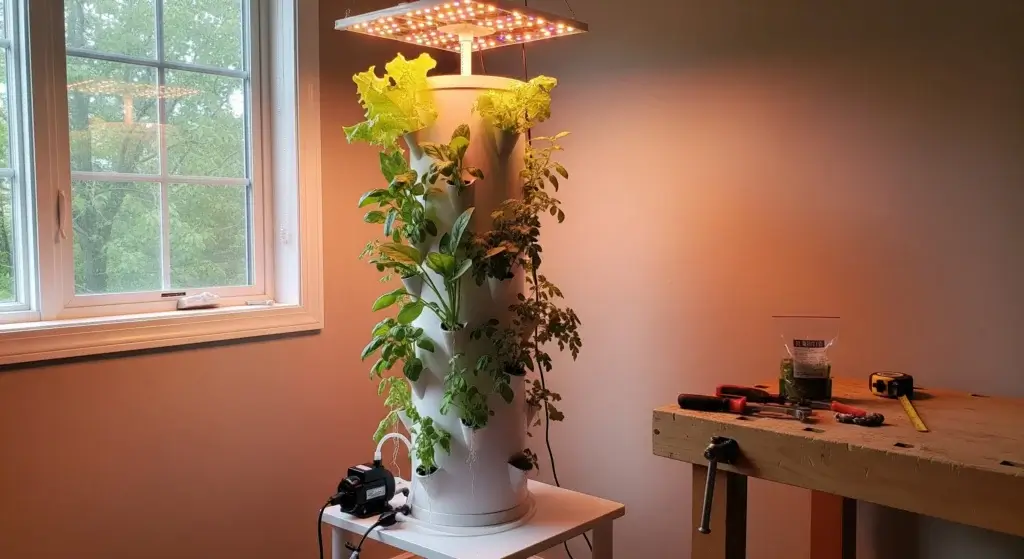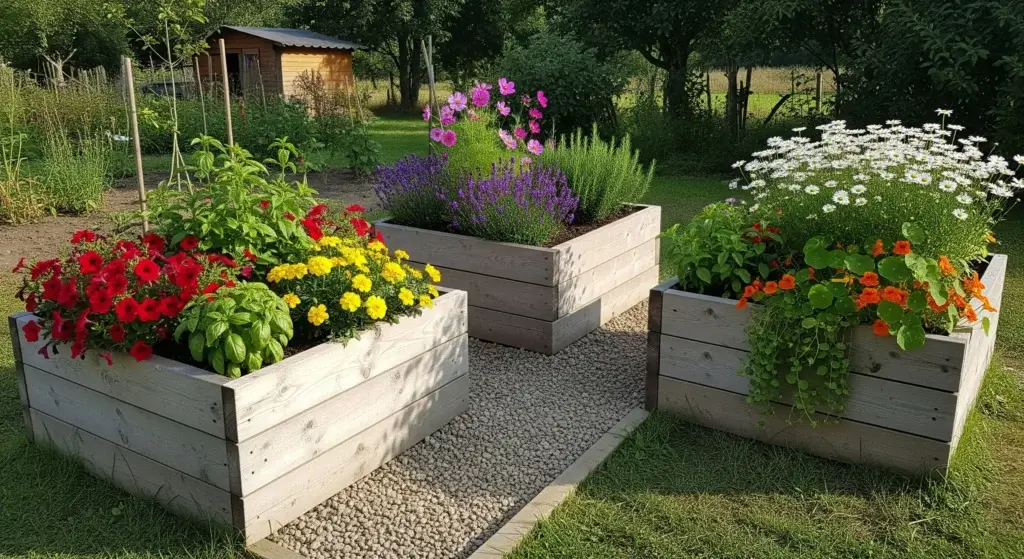
Upcycled container gardening is a creative and eco-friendly way to grow plants using containers that might otherwise end up in the trash.
This type of gardening is perfect for small spaces, urban environments, and anyone looking to reduce their environmental footprint.
Whether you’re an experienced gardener or a beginner, upcycled container gardening offers a fun and rewarding project that brings beauty and sustainability to your home.
Benefits of DIY Upcycled Container Gardening
Environmental impact
Using upcycled containers reduces waste and lowers your carbon footprint.
It’s a practical way to recycle items that might otherwise end up in a landfill.
According to the Environmental Protection Agency (EPA), recycling and composting prevented 93 million tons of waste from being dumped in 2018 alone .
Cost-effective
Gardening can be expensive, but upcycled container gardening allows you to grow plants without purchasing expensive pots.
Common household items like cans, bottles, and old furniture can be transformed into beautiful planters.
- Read also: Crafting Green Havens: DIY Garden Bed Ideas for Every Gardener
- Read also: DIY Garden Decor Ideas for a Stunning Outdoor Oasis
Creativity and personalization
Upcycled container gardening lets you express your creativity.
Each container can be unique, reflecting your personal style and preferences.
From quirky to elegant, the possibilities are endless.
Space-saving
For those with limited space, container gardening is a practical solution.
You can create vertical gardens, hanging planters, or compact arrangements that fit perfectly on balconies, patios, or windowsills.

Materials Needed
Creating an upcycled container garden doesn’t require fancy materials. Here are some common items you can use:
- Old cans, jars, and bottles
- Wooden crates or pallets
- Tires
- Broken furniture
- Buckets and pails
- Tin cans
- Paint and brushes (for decoration)
- Potting soil
- Seeds or seedlings
- Drainage materials (pebbles, gravel, or broken pottery)
- Tools (scissors, hammer, nails, drill)
Steps to Create a DIY Upcycled Container Garden
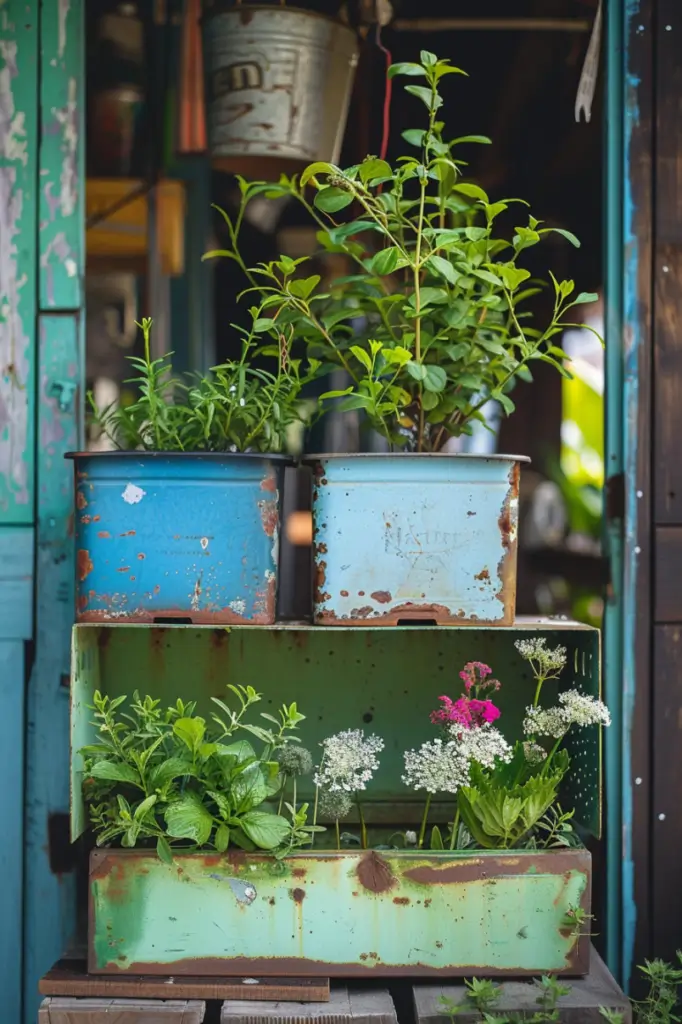
Creating a DIY upcycled container garden is a fun and sustainable way to grow plants.
Here are detailed steps to guide you through the process:
Step 1: Gather materials
Start by gathering containers from around your home or community that can be repurposed.
Look for items like old buckets, cans, wooden crates, or even unused kitchenware like teapots or colanders.
Ensure they are clean and sturdy enough to hold soil and plants.
Step 2: Prepare containers
Clean each container thoroughly to remove any dirt, residue, or contaminants.
If your containers don’t already have drainage holes at the bottom, use a drill to create them.
Adequate drainage is crucial to prevent waterlogging and root rot.
Step 3: Add drainage
To further aid drainage, place a layer of small rocks, gravel, or broken pottery pieces at the bottom of each container.
This layer helps excess water to drain away from the roots, maintaining healthy soil moisture levels.
Step 4: Add soil
Fill your containers with potting soil, leaving about an inch or two from the top rim.
Potting soil is lightweight and specifically formulated to provide nutrients essential for plant growth.
It ensures good aeration and drainage, promoting healthy root development.
Step 5: Plant seeds or seedlings
Choose seeds or seedlings suitable for container gardening and appropriate for your local climate.
Plant them according to the instructions provided on the seed packets or plant labels.
Place seeds at the recommended depth and space seedlings apart to allow for growth.
Step 6: Water and place
After planting, water your containers thoroughly.
Ensure the soil is evenly moist but not waterlogged.
Place your containers in a location that matches the sunlight requirements of your plants.
Most vegetables and herbs need at least 6-8 hours of sunlight daily, while some shade-loving plants thrive in indirect light.
Step 7: Decorate (optional)
If you wish, personalize your containers with decorative touches.
Paint them with non-toxic outdoor paint, wrap them with colorful fabric, or add labels to identify the plants.
Decorating adds a creative touch to your garden and makes it uniquely yours.
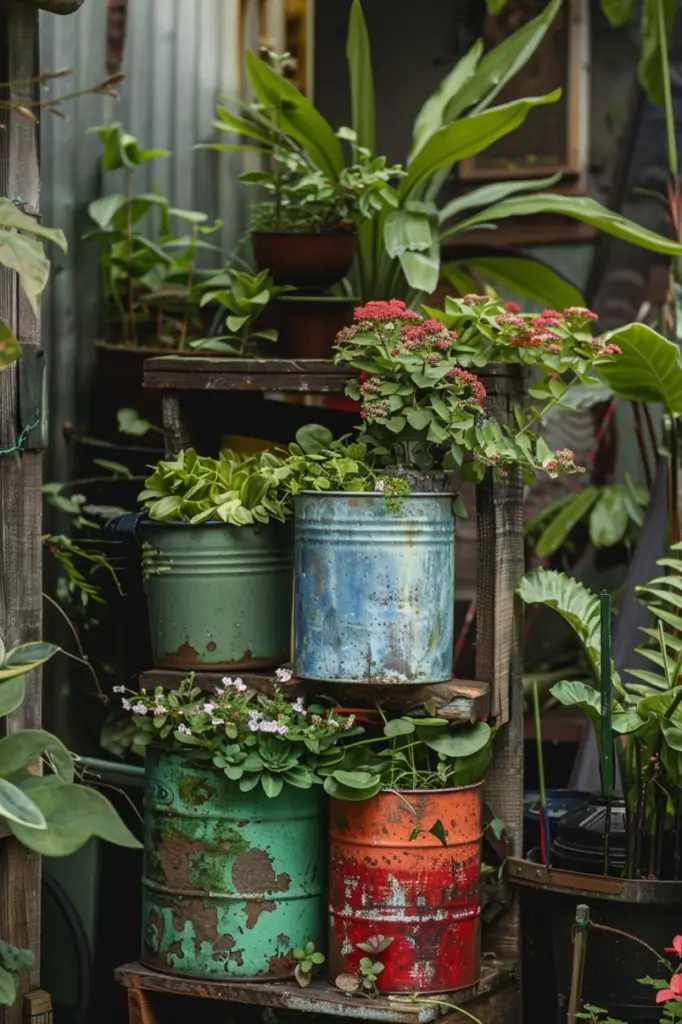
Tips and Variations
Vertical gardens
Vertical gardens utilize vertical space, making them ideal for small areas or adding a visual focal point to larger spaces.
How to implement
- Using a wooden pallet: Securely mount an old wooden pallet vertically against a wall or fence. Fill the slats with soil and plant herbs, flowers, or small vegetables in each section.
- Hanging containers: Hang baskets or containers on a wall or from a structure using hooks or brackets. Ensure they are securely attached and can support the weight of the soil and plants.
Tiered planters
Tiered planters stack containers of different sizes vertically, creating a tiered effect.
This not only saves space but also provides an attractive display.
How to implement
- Choose containers: Select containers of varying sizes and materials, ensuring they are stable when stacked.
- Arrange: Stack the containers from largest at the bottom to smallest at the top. Ensure each tier is stable and secure.
- Planting: Plant herbs, flowers, or vegetables in each container, considering their growth habits and sunlight requirements.
Self-watering planters
Self-watering planters have a built-in reservoir that supplies water to plants as needed, reducing the frequency of watering.
How to implement
- Materials needed: Use two containers—a smaller one for plants and soil, and a larger one beneath it for water.
- Assembly: Place the smaller container inside the larger one, ensuring there is space between the bottoms for water to seep through.
- Watering mechanism: Use a wick or a self-watering device to draw water up from the reservoir into the soil. This ensures plants have consistent moisture levels without overwatering.
Companion planting
Companion planting involves growing different plants together that benefit each other, such as enhancing growth or repelling pests.
How to implement
- Choose combinations: Research which plants grow well together and provide mutual benefits. For example, basil and tomatoes improve each other’s flavor and growth.
- Planting: In a single container, plant compatible species that have similar soil and sunlight needs. For instance, marigolds can deter pests from cucumber plants.
Seasonal changes
Rotate plants in your containers based on the seasons to maximize growth and adapt to changing weather conditions.
How to implement
- Spring/summer: Plant herbs, vegetables like tomatoes and peppers, and flowers that thrive in warm weather.
- Fall/winter: Transition to cold-hardy plants such as kale, spinach, or ornamental cabbages that withstand cooler temperatures.
- Maintenance: As seasons change, replant containers with appropriate species to ensure optimal growth and health throughout the year.
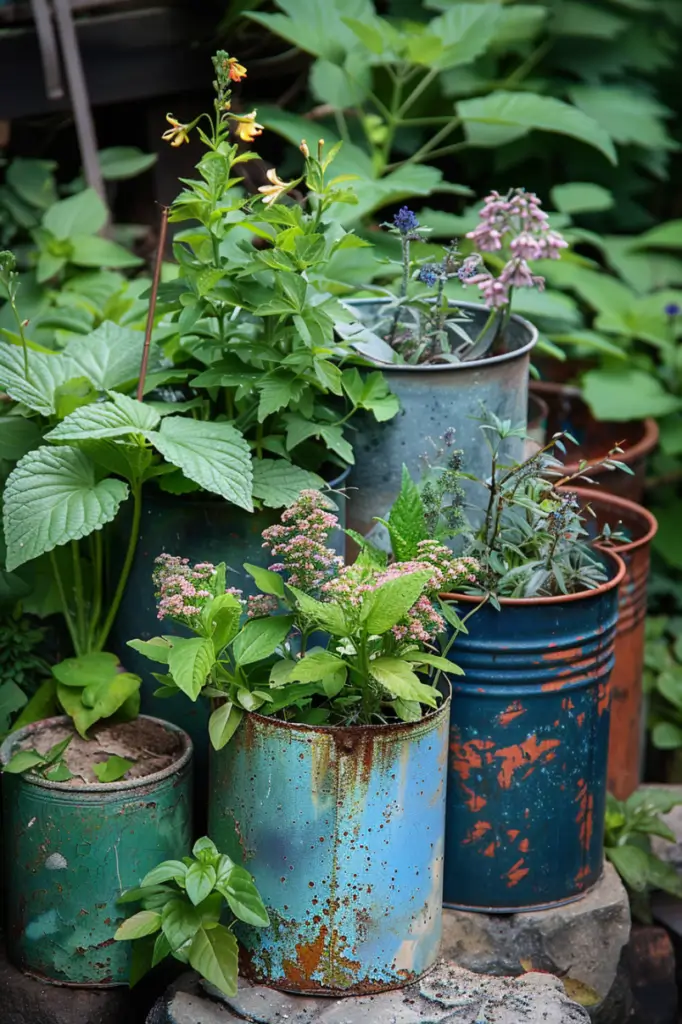
- Read also: DIY Vegetable Garden Box: Build Your Own Veggie Oasis
- Read also: Sustainable Style: DIY Garden Decor Ideas From Old Tires
Conclusion
DIY upcycled container gardening is a fantastic way to combine creativity, sustainability, and gardening.
By repurposing items you already have, you can create a beautiful garden that benefits both you and the environment.
Whether you have a small balcony or a large patio, upcycled container gardening offers a versatile and eco-friendly solution to grow your own plants.
Happy gardening!
FAQs
Herbs (like basil, mint, and rosemary), vegetables (like tomatoes, peppers, and lettuce), and flowers (like marigolds and petunias) are excellent choices.
Drill holes at the bottom of each container and add a layer of pebbles or gravel before adding soil. This helps excess water drain away from the roots.
Almost any container can be used as long as it’s clean, has drainage holes, and is large enough for the plant’s root system.
Watering needs vary by plant and container size. Generally, check the soil moisture regularly and water when the top inch feels dry.


